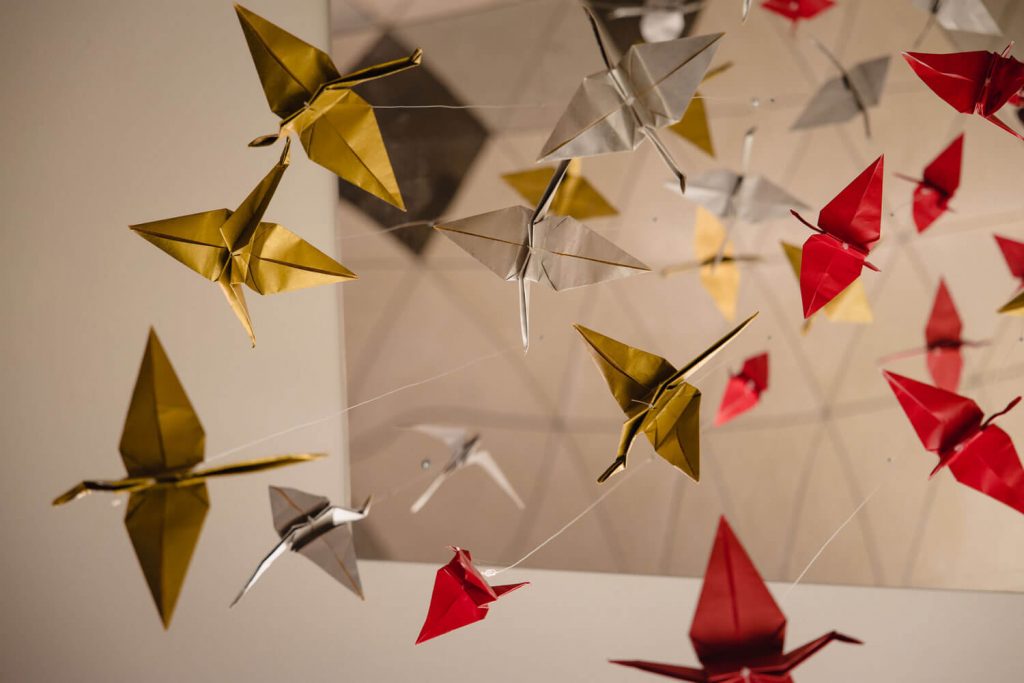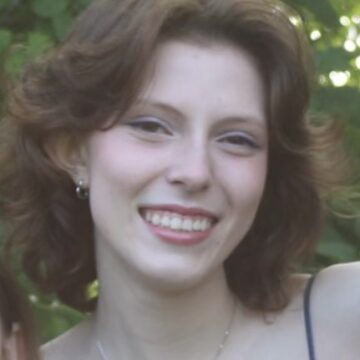
By Jodie
Having explored the myths from ancient Greece, Rome, and Egypt, my curiosity was piqued in eighth grade by a simple legend from Japanese lore. If you fold one thousand paper cranes, the gods will grant you one wish. I took it as a challenge. My previous forays into origami had ended poorly, but I was so excited to begin my quest that this detail seemed inconsequential. My art teacher loaned me a piece of origami paper and, armed with an online tutorial, my quest began. Like an early prototype of the airplane, I ascended towards my dreams for a glorious moment before nose-diving into the ground. The first crane was a disastrous failure of wrinkly lines and torn paper. Too embarrassed to ask for another, I turned to my stack of Post-it notes. By the third attempt, I ended up with a sticky pink paper crane. Holding that delicate bird, I was flooded with triumph and elation.
The first two hundred cranes were all crafted from Post-it notes. Armed with a pack of highlighters, I decorated each piece of paper individually. I folded cranes at home, between classes, and in the car. My fingers were permanently sticky from the glue I scraped off every square. Slowly, my collection grew: first ten, then fifty, then one hundred. Before the task could become monotonous, I started experimenting. How small was it possible for a crane to be? Smaller than a golf ball? Smaller than a dime? Small enough to sit on the end of a pencil? Any size was attainable. I could make a crane smaller than almost any arbitrary form of measurement. Soon I could finish a crane in fifty seconds or with my eyes closed. Anything square and foldable became my medium. Paper towels, candy wrappers, and aluminum foil joined my vibrant menagerie of carefully folded paper. I was unstoppable; that wish was as good as mine.
By six hundred cranes, the increasing demands of high school academics caused my pace to slow. I despaired. I wouldn’t let this be another ambitious project that I couldn’t finish.
My cranes mattered to me. As an outlet for expression, they served as a way to defuse frustration and sadness, and a source of pride and joy. Their creation allows me to bring beauty to the world and to find a sense of order in the bustle and chaos of life. There is a lot of beauty to be found in tiny things. I’m reminded that little gestures have a lot of meaning. I have given away cranes to my friends as a pick-me-up on bad days, and I have made cranes to commemorate people, such as the dark green crane I made the day my grandmother died. They are a symbol of hope to remind me what I have accomplished.
So, I pushed myself to keep working and to keep folding one crane at a time. My determination paid off, and in the summer after sophomore year, my passion was reinvigorated. One month before the end of junior year, I folded my thousandth paper crane. As I leaned over the open drawer brimming with origami pieces in a multitude of sizes and colors, I felt a rush of satisfaction and triumph. Not only was 1,000 cranes an achievement in its own right, but I proved to myself that I can finish what I start.
The world is filled with big numbers. College tuition, monthly rent, and car prices deal in the many thousands. Those figures are incomprehensible to someone who has never interacted with anything so large, and I wanted to understand them. A thousand will never simply be a number to me: it is hundreds upon hundreds of hand-folded cranes combined with years of effort.
So what did I wish for? It turns out, I didn’t need the wish. I learned I have the power to make things happen for myself.
Admissions Committee Comments
What was most impressive about Jodie’s essay was not the accomplishment of making 1,000 paper cranes, but how much we were able to learn about her through this simple anecdote. We determined she is someone who perseveres, as seen through the personal growth that arrived from her initial failure and eventual completion of a goal on top of the demands of high school. We learned she is kind and caring—traits exemplified through sharing cranes with friends having bad days and those made to commemorate people she lost. Her essay also showed us she is curious and willing to experiment, like testing out how small she could make cranes. These characteristics stood out and gave us an idea of how Jodie will contribute to our community, which is important in a holistic process where we try to learn about the whole student.





